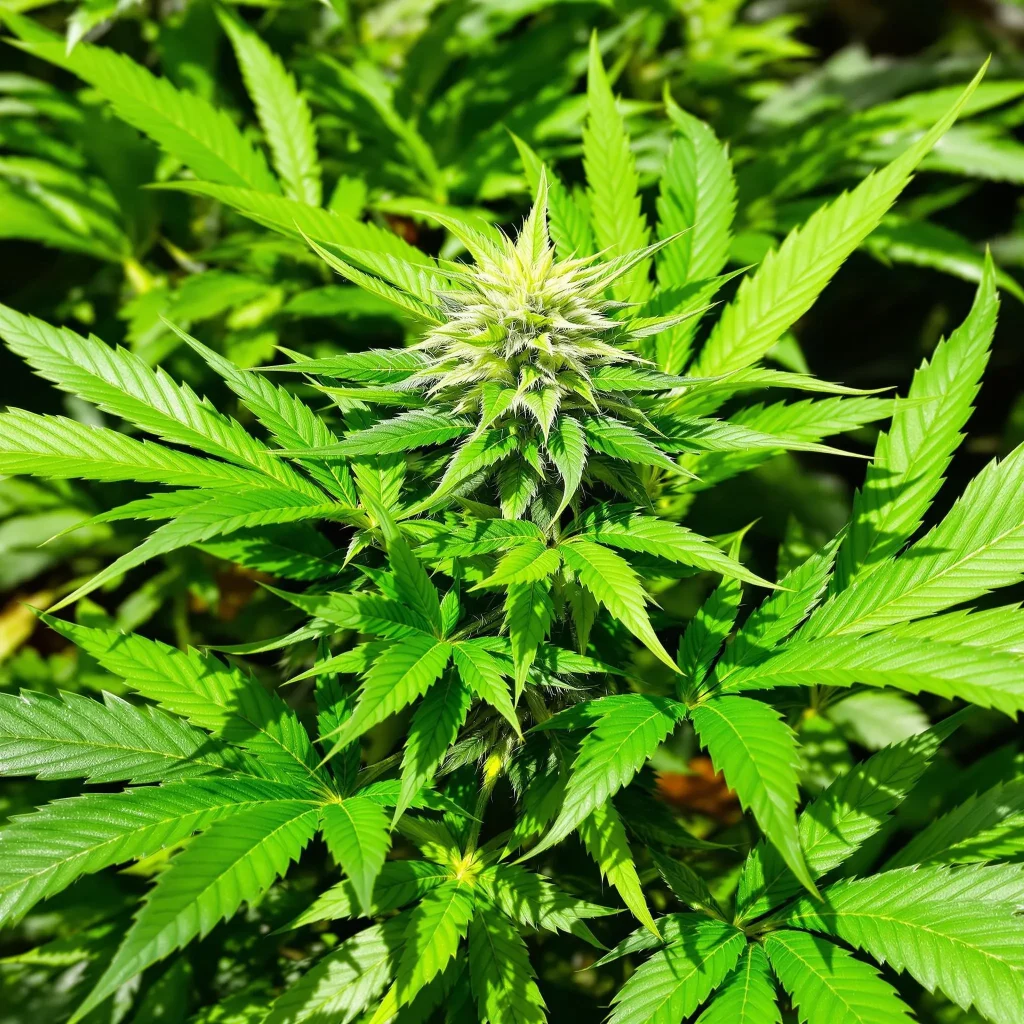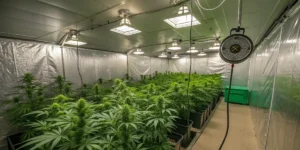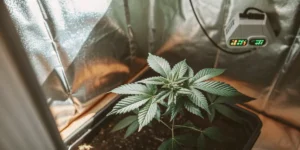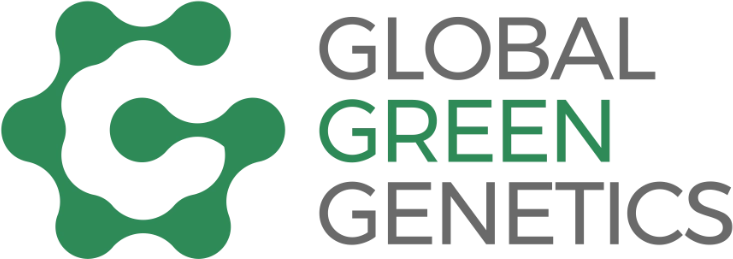What is Chelated Iron and Why is it Important for Cannabis?
Iron is essential for healthy cannabis growth, affecting everything from leaf color to overall plant health. It provides a more accessible, absorbable form of iron that helps cannabis plants thrive. Unlike regular iron, chelated iron is easier for plants to absorb, even in less-than-ideal soil conditions, which makes it especially valuable for cannabis cultivators looking to maximize growth and vitality.
How Chelated Iron Differs from Regular Iron
Regular iron can be difficult for plants to absorb, especially if the pH levels in the soil aren’t balanced. Chelated iron, however, has been chemically modified to bind with organic molecules, making it far more accessible for plants. This binding process, known as chelation, prevents iron from reacting with other elements in the soil, which can make it less available to plants. For cannabis, chelated iron is an efficient way to supply a steady source of iron.
When using it, growers benefit from its superior absorption rate, especially in soils with high pH levels. The enhanced absorption helps prevent common issues related to iron deficiency, which can be detrimental to the health and yield of cannabis plants.
Iron in Cannabis Growth and Health
Iron is crucial for photosynthesis, the process by which plants convert light into energy. In cannabis plants, iron helps form chlorophyll, the green pigment that allows them to absorb light efficiently. Without sufficient iron, cannabis plants struggle to produce enough chlorophyll, leading to weak growth and pale, yellowish leaves.
Using chelated iron for cannabis ensures that plants receive a steady supply of this essential nutrient, supporting vigorous growth and healthy foliage. With chelated iron, your cannabis plants can achieve their full potential, leading to larger, healthier yields.
Benefits of Using Chelated Iron in Cannabis Cultivation
Chelated iron is a powerhouse for cannabis cultivation, offering benefits that regular iron supplements simply can’t match. First, it helps prevent iron deficiency, a common issue in cannabis that can lead to stunted growth and poor yields. By adding chelated iron to your feeding routine, you create an optimal environment for nutrient absorption.
Additionally, chelated iron is particularly effective in hydroponic systems and soils with high pH levels, where regular iron may become locked up and unavailable to plants. This versatility makes it a must-have for growers seeking robust, vibrant plants.
Signs of Iron Deficiency in Cannabis Plants
Recognizing iron deficiency early is essential for preventing long-term damage to your cannabis plants. Chelated iron for cannabis can help address these issues if applied promptly, but knowing the symptoms is key.
How to Identify Iron Deficiency Symptoms
Iron deficiency in cannabis plants typically shows up as yellowing between the veins of young leaves while the veins themselves remain green. This symptom, known as chlorosis, starts with the newest growth and can eventually affect the entire plant if not addressed. Over time, iron deficiency can lead to stunted growth and weakened plants.
By using chelated iron for cannabis, you can prevent these symptoms from worsening and ensure that your plants maintain their health. Regular observation is crucial for identifying early signs of deficiency and taking corrective action.
Causes of Iron Deficiency in Cannabis
Iron deficiency in cannabis plants is often caused by poor soil conditions, high pH levels, or the presence of other nutrients that compete with iron. When the pH level is too high, iron becomes less soluble and harder for plants to absorb. Other factors, such as water quality and nutrient imbalances, can also interfere with iron availability.
It helps to bypass these issues by delivering iron in a more stable form. This allows cannabis plants to access the nutrient they need, even in challenging growing environments.
Impact of Iron Deficiency on Growth and Yield
Iron deficiency can have a major impact on the growth and yield of feminized cannabis plants. Without enough iron, photosynthesis slows down, leading to reduced energy production and smaller plants. Iron deficiency also weakens plants, making them more susceptible to stress and disease, which can further diminish yields.
Chelated iron for cannabis is an effective solution to prevent these issues and keep your plants thriving. By addressing iron deficiency early, you set the stage for healthier growth and higher yields, making chelated iron a valuable addition to your nutrient regimen.
How Chelated Iron Works in Cannabis Cultivation
Chelated iron is a game-changer in cannabis cultivation, thanks to its superior absorption and effectiveness in various soil types. Understanding how chelated iron functions can help you get the most out of this nutrient.
How Chelation Improves Iron Absorption
Chelation improves iron absorption by binding iron to organic molecules that are easier for plants to take up. In essence, chelated iron protects the iron molecule from binding with other elements in the soil, which would make it unavailable to plants. This chelated form keeps iron soluble and available to cannabis plants, even when soil conditions aren’t perfect.
This is especially helpful in alkaline soils or hydroponic systems, where regular iron might become locked up. Chelated iron for cannabis ensures a consistent supply of iron, supporting healthy growth across different growing conditions.
Types of Chelated Iron Suitable for Cannabis
There are several types of chelated iron, each with its unique properties. The most common types for cannabis cultivation include EDTA, DTPA, and EDDHA chelated iron. EDTA is effective in soils with a pH range up to 6.5, while DTPA works in slightly higher pH levels, making it suitable for hydroponics. EDDHA, on the other hand, is the most stable form and effective in highly alkaline soils, with pH levels up to 9.
Choosing the right type of this iron depends on your specific growing environment. For example, if you’re working with high-pH soil, EDDHA chelated iron would be the best choice for maximum effectiveness.
Chelated Iron vs. Non-Chelated Iron for Cannabis Plants
While regular, non-chelated iron can still provide some benefits, it lacks the stability and absorption efficiency of chelated iron. Non-chelated iron often becomes “locked up” in the soil, especially if the pH level isn’t within an ideal range, making it unavailable for plants. In contrast, chelated iron for cannabis remains available, providing consistent and reliable results.
Using chelated iron means your cannabis plants receive the iron they need for healthy growth, without the risks of nutrient lockout. For serious growers, chelated iron is a superior choice that leads to better overall results.
How to Use Chelated Iron for Cannabis Plants
Applying chelated iron correctly is essential to maximizing its benefits. When used properly, chelated iron can be a powerful tool in your cannabis cultivation toolkit.
Dosage Recommendations for Different Growth Stages
The dosage of chelated iron for cannabis depends on the growth stage of your plants. Young plants and seedlings need a lighter dose, as too much iron can lead to nutrient imbalances. During the vegetative stage, a moderate dose can support rapid growth, while flowering plants may need a slight increase to sustain healthy foliage and bud development.
Generally, cannabis plants benefit from a chelated iron concentration of around 1-2 ppm. Always follow product instructions and adjust based on your plant’s response to avoid over-application.
Methods of Application: Soil vs. Foliar Feeding
Chelated iron can be applied either to the soil or as a foliar spray. Soil application is the most common method, allowing iron to reach the roots directly. However, foliar feeding, spraying the leaves with a diluted solution of chelated iron, can be highly effective for rapid correction of deficiencies. This method allows iron to be absorbed through the leaves, providing quick relief for yellowing plants.
Foliar feeding is ideal for addressing early signs of deficiency, while soil application is better suited for ongoing maintenance. Using both methods strategically can ensure your cannabis plants get the iron they need.
Tips for Correctly Mixing and Applying
To avoid nutrient imbalances, always dilute chelated iron before applying it to your plants. Mix according to the manufacturer’s instructions, and test the pH of the solution to ensure optimal absorption. For foliar sprays, use a fine mist and apply during the early morning or evening to prevent leaf burn.
Consistency is key when using this iron. Regular monitoring and adjusting as needed will ensure your plants stay healthy and iron deficiency-free.
Choosing the Right Chelated Iron Product for Cannabis
Selecting the ideal chelated iron for cannabis can significantly impact your plants’ growth and health. With various types of chelated iron products available, knowing which is best suited for cannabis and your specific growing conditions is essential.
Key Factors to Consider When Selecting Chelated Iron
When choosing chelated iron for cannabis, consider factors like pH range compatibility, ease of application, and product stability. Each form of chelated iron (e.g., EDTA, DTPA, EDDHA) works best within certain pH ranges, so understanding your soil or hydroponic solution’s pH level is crucial. Additionally, some chelated iron products may come as a liquid or powder, impacting how easily you can incorporate them into your feeding routine.
Look for chelated iron products that have been tested for purity and are free from heavy metals. Choosing a reputable brand ensures your plants receive the highest quality iron, free from contaminants that could harm your plants or affect yields.
Popular Chelated Iron Products for Cannabis Cultivation
Several popular chelated iron products are highly effective for cannabis, each tailored for different growing conditions:
- Iron EDTA: Ideal for soil growers with a pH range below 6.5, offering good absorption in slightly acidic environments.
- Iron DTPA: Suitable for both soil and hydroponic setups with pH levels up to 7.5. This product is a versatile choice for cannabis growers with moderate pH needs.
- Iron EDDHA: Known for its high stability, Iron EDDHA works well in soils with a pH of up to 9, making it ideal for alkaline environments. This chelated iron is often the go-to choice for outdoor or high-pH setups.
Choosing the right chelated iron product for cannabis can help prevent deficiencies and enhance plant health, ultimately leading to improved growth and yields.
Organic vs. Synthetic Chelated Iron Options
For growers focused on organic cultivation, several organic chelated iron products are available. Organic chelates use natural compounds to bind iron, making them compatible with organic gardening practices. Synthetic chelates, such as EDTA, DTPA, and EDDHA, are chemically modified to improve iron stability and availability. While both types provide effective results, organic options may be preferred by those aiming for a fully organic grow.
Synthetic chelates tend to offer more precise control over iron levels, which can be beneficial in hydroponics or environments with extreme pH levels. Selecting between organic and synthetic chelated iron for cannabis depends on your cultivation goals and growing conditions.

FAQs About Chelated Iron for Cannabis
Growers often have questions about using chelated iron for cannabis, from application frequency to its compatibility with different systems. Here, we’ll address some common queries to help you make the most of this essential nutrient.
Can Chelated Iron Be Used in Hydroponics?
Yes, chelated iron is suitable for hydroponics. In fact, it’s highly recommended because the chelation process keeps iron soluble, making it readily available to plants in water-based systems. Iron DTPA and EDDHA are popular choices for hydroponic cannabis cultivation, as they maintain stability in hydroponic solutions with varying pH levels. For hydroponic growers, chelated iron is a reliable way to prevent iron deficiency and maintain healthy growth.
How Often Should Chelated Iron Be Applied?
The frequency of chelated iron application varies based on plant needs and growing conditions. In general, cannabis plants benefit from iron every two to three weeks, but this may change depending on signs of deficiency. Regular soil testing and monitoring plant health can help you adjust your schedule. Foliar sprays with chelated iron can be applied weekly for fast correction, while soil applications may be needed less frequently.
Is Chelated Iron Safe for All Types of Cannabis Strains?
Yes, chelated iron is safe for all cannabis strains when used in the appropriate concentrations. However, some strains may be more sensitive to nutrient levels, especially if they are bred for specific climates or soil types. Monitoring individual strain responses to chelated iron will help ensure optimal absorption without risking over-fertilization. By using the right dosage and observing plant response, you can safely use chelated iron for cannabis to support any strain’s health and growth.




